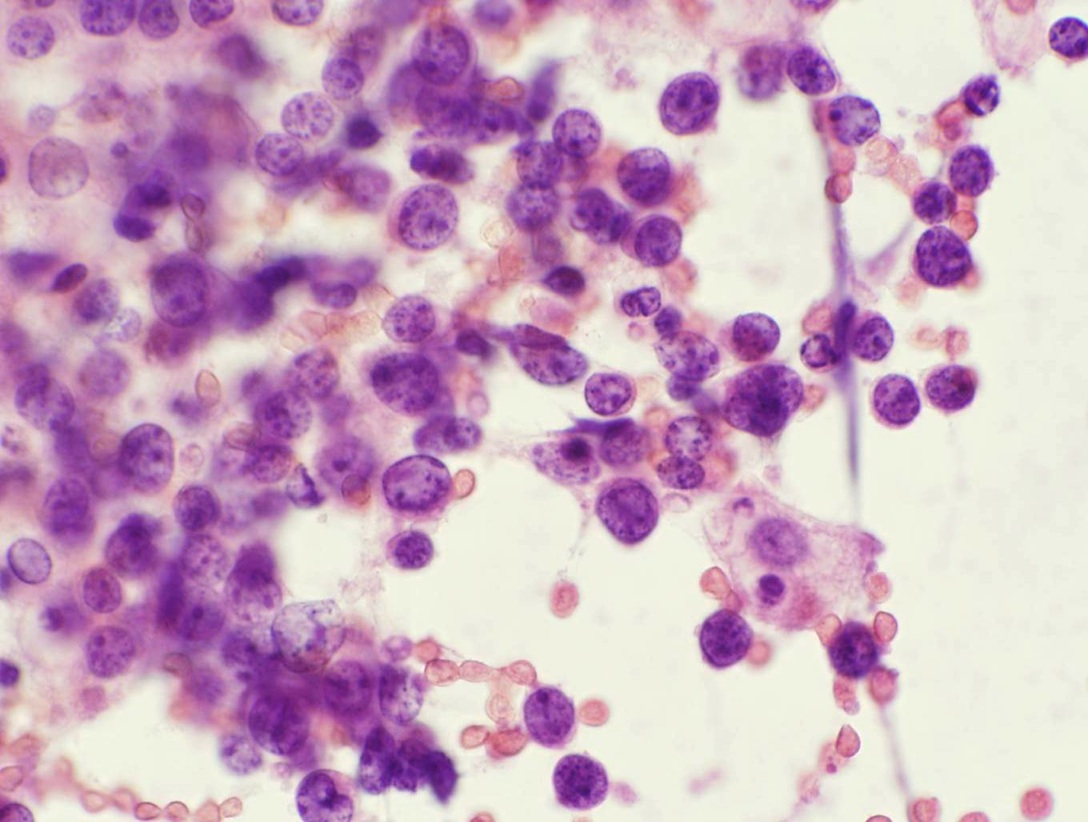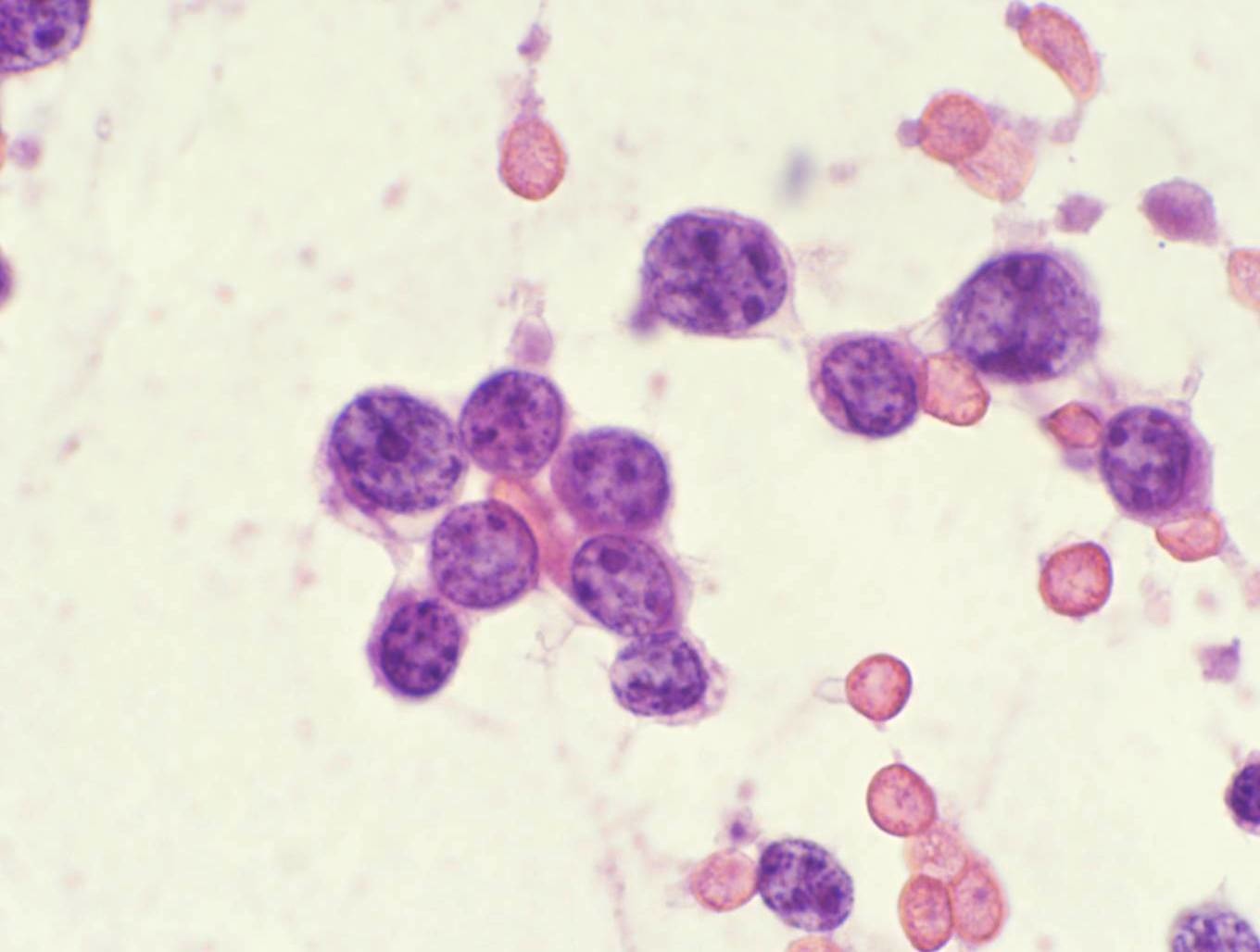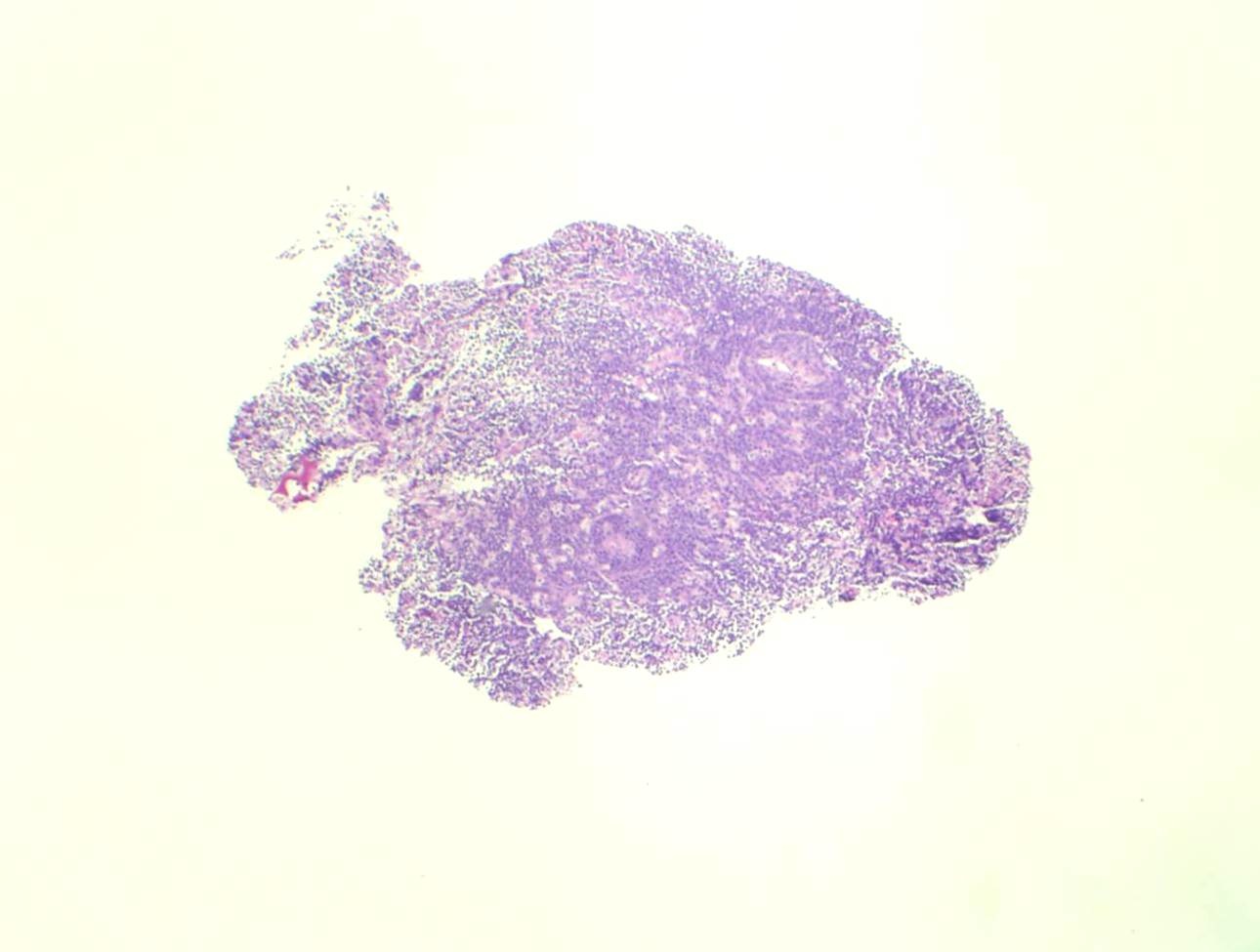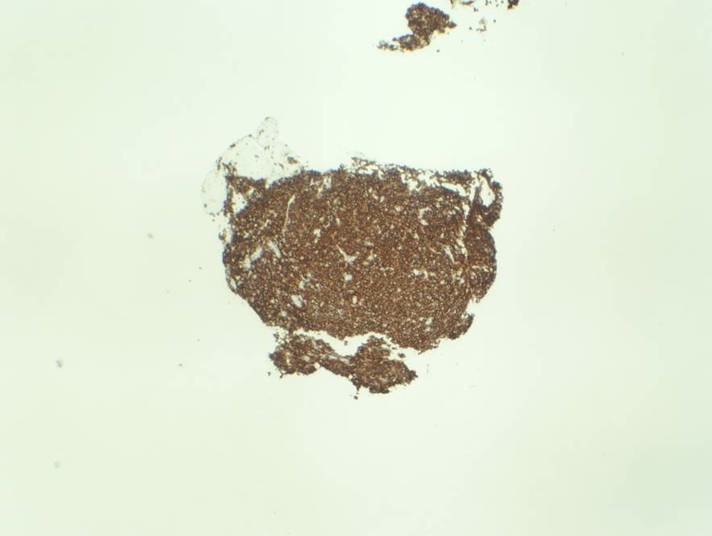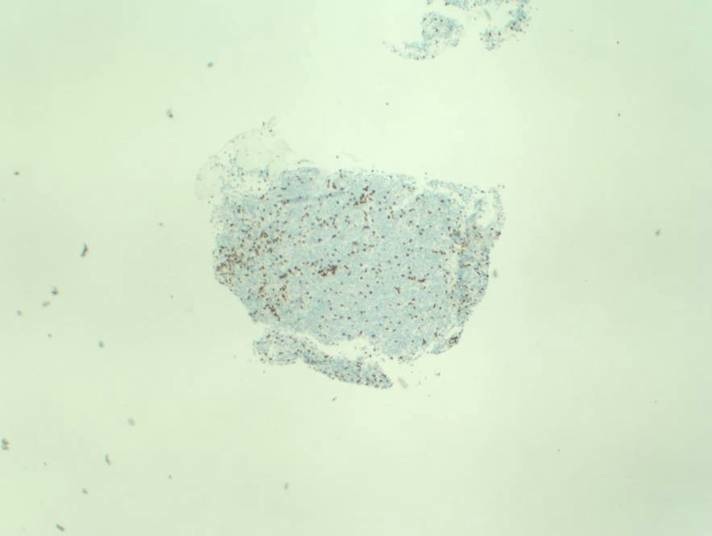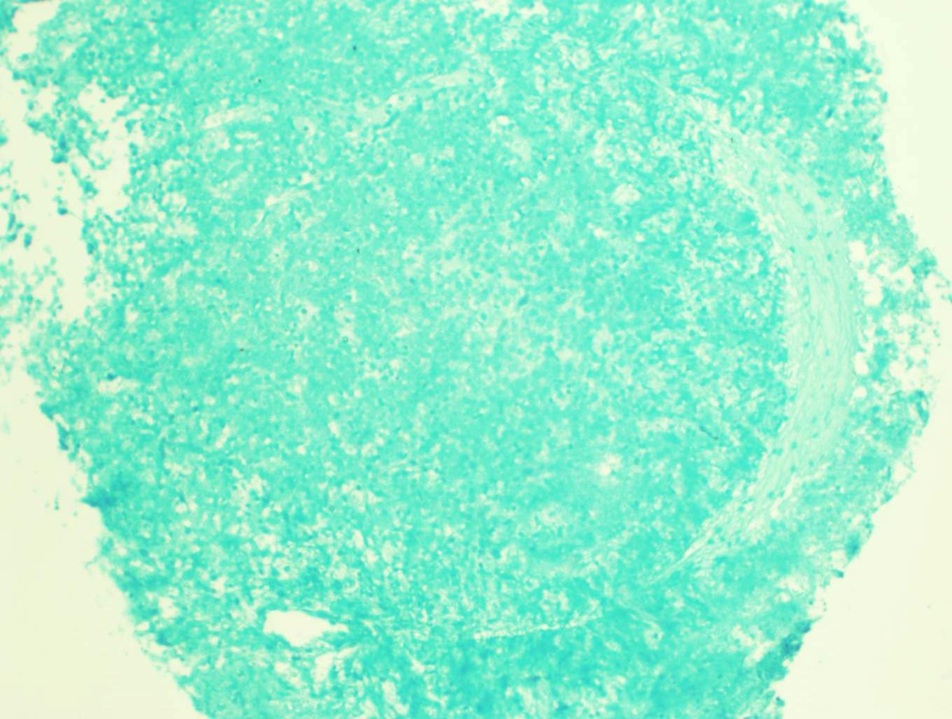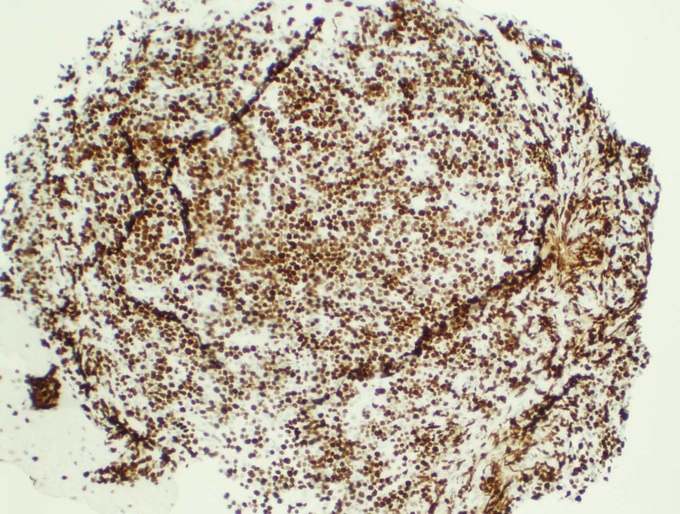1 April 2010 - Case #175
All cases are archived on our website. To view them sorted by case number, diagnosis or category, visit our main Case of the Month page. To subscribe or unsubscribe to Case of the Month or our other email lists, click here.
This case was contributed by Dr. Julia Braza, Beth Israel Deaconess Medical Center, Boston, Massachusetts (USA).

Orchard Pathology
Orchard Pathology is a complete diagnostic information system designed to accommodate the comprehensive pathology laboratory. Orchard Pathology is used as a stand-alone system for anatomic testing or combined with Orchard Harvest LIS to integrate clinical. The shared database provides access to the patient's history and enables the consolidation of clinical results to the pathology report.
Unlike older legacy systems that do not utilize pathology-specific word processing, Orchard Pathology stores report information in discrete data fields that enhance EMR integration and simplify the process to mine data for evaluations; correlation studies; quality assurance; and regulatory, statistical, and other management reports.
Advertisement
Case #175
Clinical history:
A 70 year old woman presented with confusion, lethargy, short term memory loss, disorientation and fever. She had a history of CNS vasculitis and a right thalamic CVA.
MRI showed a rounded lesion in the right cerebral peduncle and the right putamen / inferior lateral thalamus. Radiologically it was a homogeneous lesion with slight effacement of the right lateral ventricle. The radiologic differential diagnosis was lymphoma, primary glial neoplasm or subacute infarct. There was no other significant medical history.
A biopsy was obtained.
Radiology images:
Microscopic images:
What is your diagnosis?
Diagnosis: Primary diffuse large B cell lymphoma of the CNS
Immunostains:
Discussion:
Primary diffuse large B cell lymphoma of the central nervous system is a rare tumor that by definition, arises exclusively in the CNS with no obvious lymphoma elsewhere at diagnosis. It represents 5 - 10% of CNS neoplasms in patients ages 75+ (Hum Path 2003;34:1137). A majority of these neoplasms arise supratentorially within the white matter and in the periventricular area. They may be multifocal and may affect the leptomeninges but primary leptomeningeal involvement is rare. At diagnosis, 20% have ocular involvement; and 80 - 90% of these patients develop contralateral tumors and intraparenchymal CNS lesions, with invasion of the subretinal pigment epithelial space and vitreous. Dissemination to extraneural sites such as bone marrow is extremely rare.
Radiologically, these tumors are generally solitary, homogeneously contrast enhancing and usually have no ring enhancement, in contrast to glioblastoma multiforme and metastases.
Clinically, patients usually present with focal neurological deficits, signs of increased intracranial pressure or neuropsychiatric symptoms. Leptomeningeal involvement generally presents with a headache. Intraocular involvement may cause blurred vision or floaters.
Grossly, most central lymphomas are solid, gray, ill defined and usually deep seated. Some travel along white matter tracts and transcend the corpus callosum, like infiltrating gliomas. Histologically, they are widely infiltrating with a perivascular predilection. Most are discohesive but may occur in a glial meshwork within the CNS. Primary brain lymphomas have scant cytoplasm, high grade nuclei and multiple nucleoli but less pleomorphism than other high grade CNS tumors. Most primary CNS lymphomas are diffuse large B cell subtype and are immunoreactive for CD20, CD79a and CD22 but negative for CD3. However, nearly all tumors have a background of reactive T cells that may lead to an erroneous diagnosis of T cell lymphoma. The mitotic index is often > 50%.
Smears show single cells with discrete cell borders, vesicular nuclei, prominent nucleoli and frequent apoptosis.
Treatment includes high dose methotrexate therapy with or without radiation. Chemotherapy has extended median survival in immunocompetent patients to 44 months (eMedicine: Primary CNS Lymphoma [Accessed 23 April 2024]). Although tumors can be classified by immunohistochemistry into germinal center and nongerminal center phenotypes, this does not appear to influence prognosis (Neuropathology 2010;30:232, J Neurooncol 2010;98:341).
References: Neurol India 2009;57:756
All cases are archived on our website. To view them sorted by case number, diagnosis or category, visit our main Case of the Month page. To subscribe or unsubscribe to Case of the Month or our other email lists, click here.
This case was contributed by Dr. Julia Braza, Beth Israel Deaconess Medical Center, Boston, Massachusetts (USA).

Orchard Pathology is a complete diagnostic information system designed to accommodate the comprehensive pathology laboratory. Orchard Pathology is used as a stand-alone system for anatomic testing or combined with Orchard Harvest LIS to integrate clinical. The shared database provides access to the patient's history and enables the consolidation of clinical results to the pathology report.
Unlike older legacy systems that do not utilize pathology-specific word processing, Orchard Pathology stores report information in discrete data fields that enhance EMR integration and simplify the process to mine data for evaluations; correlation studies; quality assurance; and regulatory, statistical, and other management reports.
Website news:
(1) We are updating the Bladder and Breast-nonmalignant chapters.
(2) Thanks for visiting us at USCAP and for your suggestions. In March 2010, we had record traffic of 273,529 visits (over 9 million "hits").
Visit and follow our Blog to see recent updates to the website.
(1) We are updating the Bladder and Breast-nonmalignant chapters.
(2) Thanks for visiting us at USCAP and for your suggestions. In March 2010, we had record traffic of 273,529 visits (over 9 million "hits").
Visit and follow our Blog to see recent updates to the website.
Case #175
Clinical history:
A 70 year old woman presented with confusion, lethargy, short term memory loss, disorientation and fever. She had a history of CNS vasculitis and a right thalamic CVA.
MRI showed a rounded lesion in the right cerebral peduncle and the right putamen / inferior lateral thalamus. Radiologically it was a homogeneous lesion with slight effacement of the right lateral ventricle. The radiologic differential diagnosis was lymphoma, primary glial neoplasm or subacute infarct. There was no other significant medical history.
A biopsy was obtained.
Radiology images:
Microscopic images:
What is your diagnosis?
Click here for diagnosis and discussion:
Diagnosis: Primary diffuse large B cell lymphoma of the CNS
Immunostains:
Discussion:
Primary diffuse large B cell lymphoma of the central nervous system is a rare tumor that by definition, arises exclusively in the CNS with no obvious lymphoma elsewhere at diagnosis. It represents 5 - 10% of CNS neoplasms in patients ages 75+ (Hum Path 2003;34:1137). A majority of these neoplasms arise supratentorially within the white matter and in the periventricular area. They may be multifocal and may affect the leptomeninges but primary leptomeningeal involvement is rare. At diagnosis, 20% have ocular involvement; and 80 - 90% of these patients develop contralateral tumors and intraparenchymal CNS lesions, with invasion of the subretinal pigment epithelial space and vitreous. Dissemination to extraneural sites such as bone marrow is extremely rare.
Radiologically, these tumors are generally solitary, homogeneously contrast enhancing and usually have no ring enhancement, in contrast to glioblastoma multiforme and metastases.
Clinically, patients usually present with focal neurological deficits, signs of increased intracranial pressure or neuropsychiatric symptoms. Leptomeningeal involvement generally presents with a headache. Intraocular involvement may cause blurred vision or floaters.
Grossly, most central lymphomas are solid, gray, ill defined and usually deep seated. Some travel along white matter tracts and transcend the corpus callosum, like infiltrating gliomas. Histologically, they are widely infiltrating with a perivascular predilection. Most are discohesive but may occur in a glial meshwork within the CNS. Primary brain lymphomas have scant cytoplasm, high grade nuclei and multiple nucleoli but less pleomorphism than other high grade CNS tumors. Most primary CNS lymphomas are diffuse large B cell subtype and are immunoreactive for CD20, CD79a and CD22 but negative for CD3. However, nearly all tumors have a background of reactive T cells that may lead to an erroneous diagnosis of T cell lymphoma. The mitotic index is often > 50%.
Smears show single cells with discrete cell borders, vesicular nuclei, prominent nucleoli and frequent apoptosis.
Treatment includes high dose methotrexate therapy with or without radiation. Chemotherapy has extended median survival in immunocompetent patients to 44 months (eMedicine: Primary CNS Lymphoma [Accessed 23 April 2024]). Although tumors can be classified by immunohistochemistry into germinal center and nongerminal center phenotypes, this does not appear to influence prognosis (Neuropathology 2010;30:232, J Neurooncol 2010;98:341).
References: Neurol India 2009;57:756



